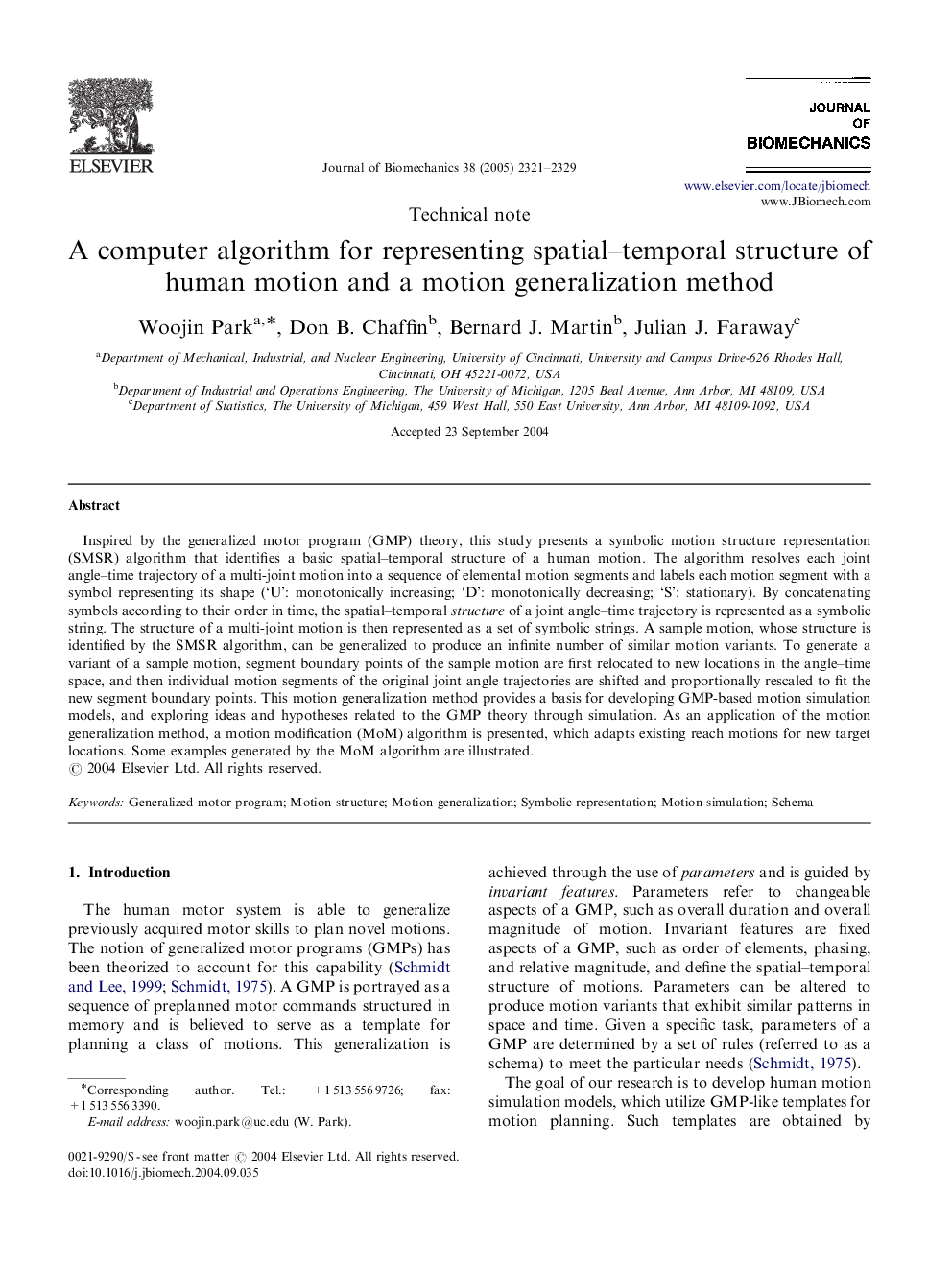| Article ID | Journal | Published Year | Pages | File Type |
|---|---|---|---|---|
| 875576 | Journal of Biomechanics | 2005 | 9 Pages |
Inspired by the generalized motor program (GMP) theory, this study presents a symbolic motion structure representation (SMSR) algorithm that identifies a basic spatial–temporal structure of a human motion. The algorithm resolves each joint angle–time trajectory of a multi-joint motion into a sequence of elemental motion segments and labels each motion segment with a symbol representing its shape (‘U’: monotonically increasing; ‘D’: monotonically decreasing; ‘S’: stationary). By concatenating symbols according to their order in time, the spatial–temporal structure of a joint angle–time trajectory is represented as a symbolic string. The structure of a multi-joint motion is then represented as a set of symbolic strings. A sample motion, whose structure is identified by the SMSR algorithm, can be generalized to produce an infinite number of similar motion variants. To generate a variant of a sample motion, segment boundary points of the sample motion are first relocated to new locations in the angle–time space, and then individual motion segments of the original joint angle trajectories are shifted and proportionally rescaled to fit the new segment boundary points. This motion generalization method provides a basis for developing GMP-based motion simulation models, and exploring ideas and hypotheses related to the GMP theory through simulation. As an application of the motion generalization method, a motion modification (MoM) algorithm is presented, which adapts existing reach motions for new target locations. Some examples generated by the MoM algorithm are illustrated.
